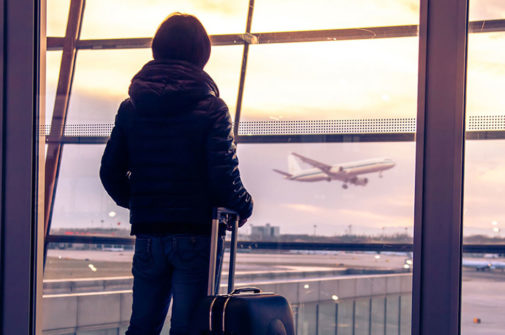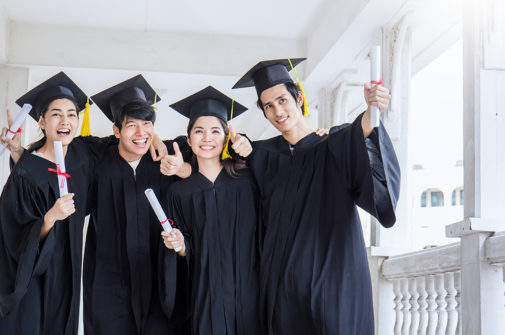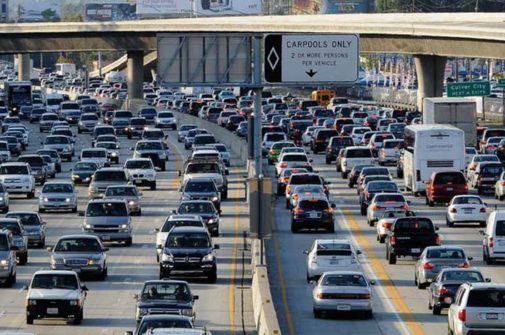Dwelling in a foreign land far from home is not easy, with differences in language, culture, customs, and ways of life. However, the United States, known as the cradle of scientific and technological innovations, is a country with a modern education system, advanced healthcare, and abundant opportunities for personal development. Therefore, to set foot and settle in the U.S., what immigration policies can Vietnamese individuals pursue? We will explore this in the following article.

The United States is known as a nation of immigrants, which is why it constantly creates various immigration policies. Currently, there are four commonly chosen and easily obtainable U.S. visa policies for Vietnamese people:
- Employment-based immigration: This policy applies to many skilled workers and craftsmen who can easily settle in the U.S. Examples include the EB3 immigrant visa program.
- Study and immigration in the U.S.: This form of immigration applies to many students who wish to study at various levels from elementary school to university and beyond. Many students can choose to apply for U.S. study visas such as J1-J2 visas, M1-M2 visas, etc.
- Investment and immigration: This policy is for investors who bring capital from abroad, with investment amounts ranging from $500,000 to $1 million USD. Programs like the EB5 immigrant investor program and L-1 visas are attracting investments from around the world, including Vietnam.
- Family reunification: This policy is for individuals with close family ties to U.S. residents, such as spouses, parents, children (including adopted or biological), etc. Common visas under this category include the F4 visa.
Firstly, Employment-based Immigration Policy
Work visas for the United States fall under non-immigrant visas, and depending on the nature of the work and the purpose of stay, corresponding visa types are issued.
Depending on the type of work, applicants will be granted one of the following popular work visas in the U.S.:
- H-1B Visa: This visa is for individuals coming to the U.S. to work in a specialized field. A prerequisite for this visa is having at least a bachelor’s degree in a specific field related to the intended job.
- L-1 Visa: This visa allows for intra-company transfers within multinational companies. It is intended for executives, managers, or employees with specialized knowledge transferring temporarily to the U.S. office, branch, or subsidiary of the same company.
Additionally, there are other non-immigrant visas such as:
- H-2A Visa (Seasonal Agricultural Worker)
- H-2B Visa (Skilled and Unskilled Worker)
- H-3 Visa (Trainee)
- H-4 Visa (Dependents)
- L-2 Visa (Dependents)
- J Visa (Exchange Visitor)
- Q Visa
- O Visa
- P Visa (Artists, Athletes, and Entertainers)
Secondly, Study and Immigration Pathway in the U.S.
The U.S. education system has produced top-quality graduates who secure stable employment opportunities globally, showcasing undeniable achievements. While other countries excel in specific fields, the U.S. maintains consistently high educational standards across all levels, making its education system stand out worldwide and a popular choice for international students, including those from Vietnam.
To accommodate students choosing to study in the U.S., the U.S. Immigration Department offers three types of student visas: F1-F2 visas, M1-M2 visas, and J1-J2 visas.
- F1 or M1 Visa: These visas are for full-time and long-term students. To qualify for an F1 or M1 visa, students need to be issued an I-20 form—a letter of acceptance from their school—for either high school preparation, college, or university studies.
- J1-J2 Visa: These visas are for students participating in exchange programs, consultations, research, teaching, or temporary work such as Au Pair. To obtain this visa, the U.S. partner or school must provide you with a DS-2019 form—a confirmation of your participation in their educational or work program.
- F2 or M2 Visa: F2 or M2 visas are for spouses or children of F1 or M1 visa holders.
Thirdly, Investment and Immigration Pathway
Currently, countries around the world are eager to invest in the most dynamic and developed market, the United States. Here, the local government allows foreign investors to enter the U.S. through the EB-5 and L-1 investment immigration programs. However, entering this market requires navigating through complex procedures and meeting specific requirements.
The EB-5 and L-1 investment immigration programs are the safest and quickest ways for foreigners to obtain U.S. green cards through investment. Initiated by the U.S. government in 1990, these programs have significantly improved economically disadvantaged areas in the U.S. with high unemployment rates or slow economic growth.
Each year, 10,000 green cards are allocated under these programs, with 3,000 reserved for investors in Regional Centers. The U.S. Citizenship and Immigration Services (USCIS) estimates that over 90% of EB-5 and L-1 visas are issued through Regional Centers.
In the EB-5 investment program, the two most critical factors are the source of funds and the EB-5 investment project itself. For the L-1 visa, the investment amount is lower and easier, but the approval criteria are stricter, requiring at least one year of managerial experience in Vietnam and the visa granted is not a green card. This visa allows the investor’s family to accompany them and enjoy all healthcare benefits like U.S. citizens.
And finally, Family Reunification Immigration Pathway to the U.S.:
Immigrating to the United States through family reunification sponsorship allows you to obtain a green card and become a lawful permanent resident. If you wish to become a U.S. permanent resident based on being a family member of a U.S. citizen or lawful permanent resident, you must meet the following conditions:
- If the sponsor is a U.S. citizen, they can file a petition to sponsor the following relatives from abroad to immigrate to the U.S.:
- Spouse
- Unmarried children under 21 years old
- Unmarried children over 21 years old
- Married children of any age
- Siblings, if the sponsor is at least 21 years old
- Parents, if the sponsor is at least 21 years old
- If the sponsor is a U.S. lawful permanent resident, they can file a petition to sponsor the following relatives from abroad to immigrate to the U.S.:
- Spouse
- Unmarried children of any age
In all these cases, the U.S. sponsor must be able to provide evidence proving the family relationship.
If you are interested in learning more about immigrating to the U.S. through the EB-5 and L-1 visa programs, please contact our office for a free consultation.
1. Garland : 3112 N. Jupiter Rd, Ste 212, Garland, Tx 75044
2. Irving: 4441 W . Airport Fwy, Irving, Tx 75062
3. Houston: 10613 Bellaire Blvd, A.107, Houston, Tx 77072
Arlington và Garland, Texas , USA : +1 817-633-1975
Viber : +1 469-450-8383
Saigon: 086 745 1975 0903 081 177 – 098 474 3423















